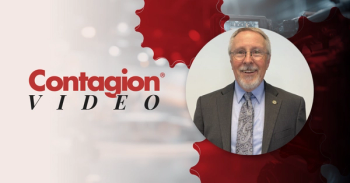
Screening and Surveillance of Clostridium difficile in Healthcare Facilities
Robin Jump, MD, PhD, assistant professor in the Department of Medicine at the Case Western Reserve University, discusses efforts to screen asymptomatic Clostridium difficile carriers as well as some of the barriers to implementing active surveillance and putting asymptomatic carriers in isolation.
Robin Jump, MD, PhD, assistant professor in the Department of Medicine at the Case Western Reserve University, discusses efforts to screen asymptomatic Clostridium difficile carriers as well as some of the barriers to implementing active surveillance and putting asymptomatic carriers in isolation. Dr. Jump was asked by Contagion to comment on a study published in the June 2016 issue of JAMA:
Interview Transcript (slightly modified for readability)
“These efforts to screen asymptomatic [Clostridium difficile] carriers and their admission to the hospital are an extension of what has been done already with methicillin-resistant Staphylococcus aureus, or MRSA, and it’s a fantastic idea; I am pleased to see that [clinicians] were able to show a decrease in the expected rate of C. diff cases. They estimated based on their study outcomes that they prevented 63 of 101 healthcare associated C. difficile cases, which is fantastic and commendable. To achieve this, the numbers estimate that they had to screen about 120 people on admission to the hospital and isolate 6 asymptomatic carriers to prevent those cases of C. difficile. This seems to be a very rational approach and I like it.
I expect that based on what it costs to screen people, including the microbiology laboratory time and doing the actual cultures versus having a case of C. diff in the hospital, I expect that it’s very cost effective. Patients may not like it; they don’t always like being on contact precautions for MRSA either but in the public health setting this seems to make sense and it seems to be where we have to go at this point given the burden of drug-resistant organisms.
It [also] seems to make good sense to isolate preemptively rather than wait until after we know that someone is sick or to isolate preemptively rather than wait until after we know someone is sick or to isolate preemptively so that someone who is a carrier doesn’t lead to healthcare workers spreading spores to other patients and making them sick as well.
I think some of the barriers to implementing active surveillance and putting asymptomatic carriers in isolation pertain to cost and the effort that’s required on the part of the nursing staff, because they are the ones that will have to do this. There may be also some reluctance on the part of the patients, too, because this is different from getting your nose swabbed; this is a different part of the body that has to get swabbed, and that’s not always something that we are very comfortable with. I don’t think I would be upon admission to the hospital. A second potential barrier may be that this is [just] one study and [though] I think that it is worthwhile pursuing, there may be a call for more evidence before we can start making this a widespread investment into healthcare infection control and prevention.”
Newsletter
Stay ahead of emerging infectious disease threats with expert insights and breaking research. Subscribe now to get updates delivered straight to your inbox.




















































































































































































































































































